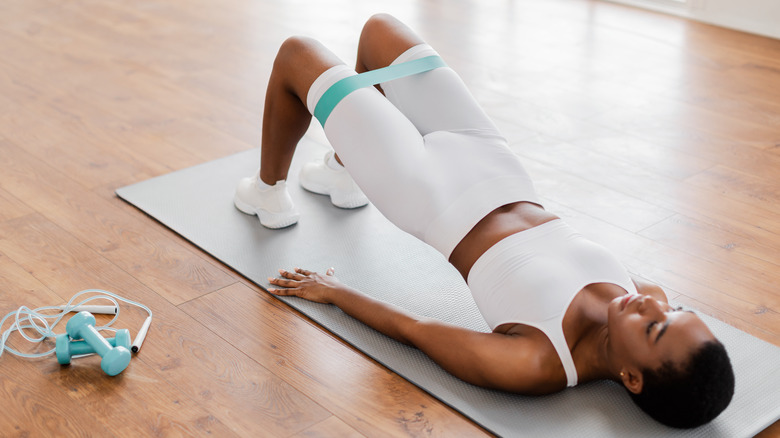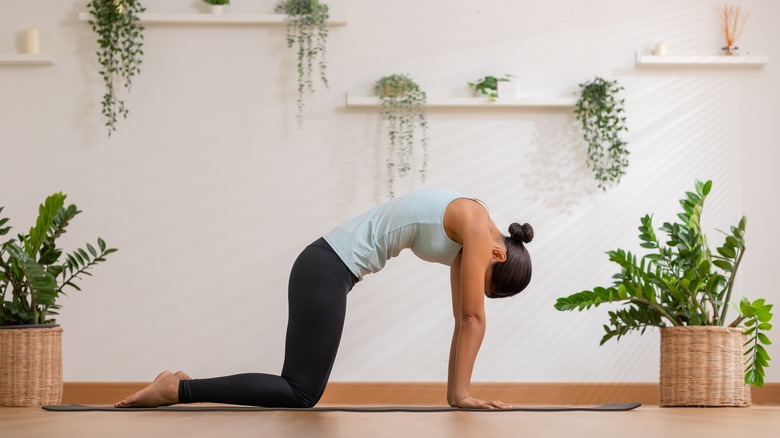Three Glute Exercises That Can Improve Lower Back Pain
Nobody likes lower back pain. This fairly common health problem can make certain situations extremely difficult, especially if the pain is excruciating. It's at the top of the list for the most common reasons to visit the doctor, and according to Cleveland Clinic, four out of five people experience lower back pain sometime during life. Whether it's from the effects of aging, disc or structural problems, or fractures, strengthening your muscles can help alleviate your discomfort.
One of the top muscles that the International Sports Sciences Association (ISSA) recommends strengthening is your glutes. While many lower-body exercises work the glutes, there are certain exercises that specifically target these muscles. Take squats, for instance. Regular squats develop the glute muscles, but swiss ball wall squats directly target and supercharge the muscle group. To start, find an open wall. Then, place the ball between you and the wall at your lower back. Gently lean back into the ball as you perform a squat.
Well+Good suggests another squat variation called banded squats. As physical therapist Natalie Sampson points out, "Adding resistance bands will allow you to activate the gluteus medius." For this movement, you'll want to position the bands around your shins, then step further than hip-width apart to create tension. Then, squat like normal.
What are other exercises that help with lower back pain?
Staying on the resistance band train, another exercise that strengthens the glute muscles and helps alleviate lower back pain is banded side steps (per Well+Good). This exercise targets the glutes in a different way, since the movement is lateral. To begin, keep the bands on your shins and move your feet hip distance apart. From here, you want to semi-squat, stepping to the left a couple of times, then back to the right. Make sure to step the same amount of times in each direction. Natalie Sampson suggests that you also be mindful of your torso leaning too much to one side, and to keep your feet parallel as you step out with your heel first.
Of course, if you're looking for more exercises, ISSA recommends adding deadlifts and glute bridges to your glute fitness repertoire. These will not only help alleviate back pain, but deadlifts (when done correctly, with proper posture) specifically train your lower and upper back muscles, core, and upper leg muscles (via Byrdie).
Don't forget that stretching exercises can also do wonders for your lower back. Give traditional yoga poses for pain relief a whirl, such as cat-cow or child's pose, which gently stretch your spine and promote flexibility (via Healthline). However, if your pain doesn't subside, it's best to contact your physician.


